 Cheapie tabloid shows the way to enriched health. 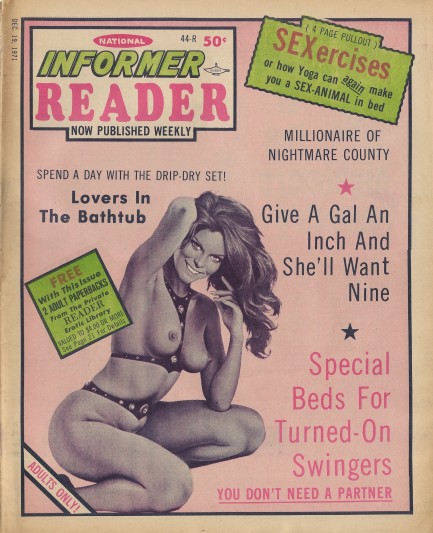
Above is the cover and below are some interior scans from National Informer Reader, an offshoot of the tabloid National Informer. It hit newsstands today in 1971. Generally the publication featured photographed models on its cover, but we've run across a few like this one with illustrations. There's another one in the same vein inside the paper, and of course both are uncredited, though they look like the work of Alain Gourdon, aka Aslan. Needless to say, if these drawings are the work of the famed French illustrator, the editors of Informer Reader are unlikely to have paid for them.
The centerpiece of this issue is the spread on Swami Sarasvati, a famous yoga teacher who was born in India but moved to Australia and in 1969 became the host of a yoga television show that aired five mornings a week. Informer Reader shares her “sexercises,” but this turns out to be the editors' salacious take on things—the Swami is merely offering relaxation and better health. It's interesting, though, that she posed in a bikini. Clearly she wasn't so zen a little self promotional skin was out of the question. You'll notice her Siamese cat makes an appearance. There's a video online of the Swami being interviewed, which you can see here, and amusingly, the cat makes an appearance there too.
Elsewhere in the issue readers get another installment of “I Predict” by seer Mark Travis. Never timid, this time around he warns that the U.S. and Soviet Union will develop lightning weapons to blast each other, that a member of the British parliament will be revealed as a modern Jack the Ripper, and that a famous Hollywood producer will be exposed as a drug kingpin. As a prognosticator you only have to be right one in ten times to impress people, but Travis isn't even giving himself a chance with these crackpot predictions. We have more Readers to upload, so we'll see if his anemic percentage improves. Scans below. 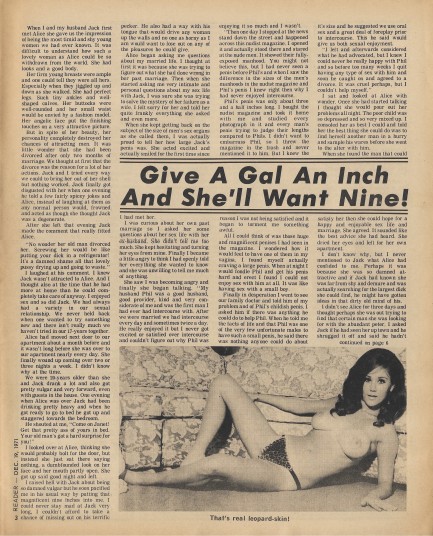 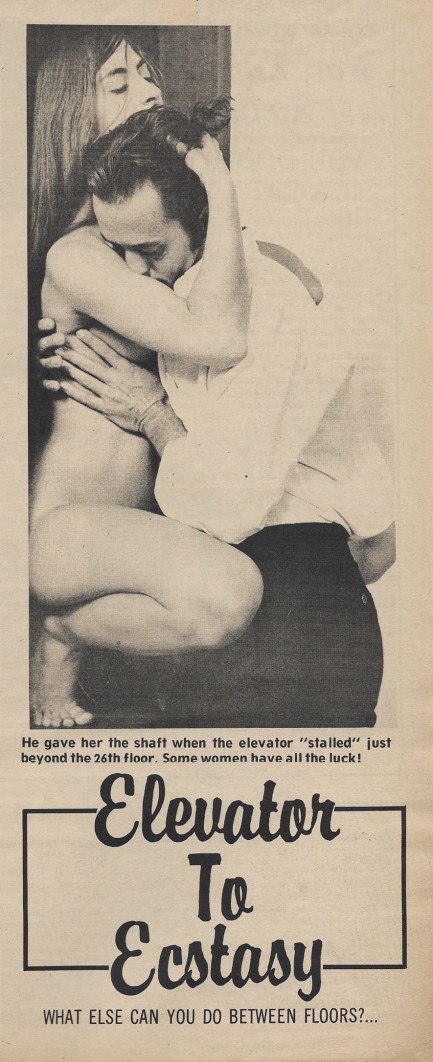 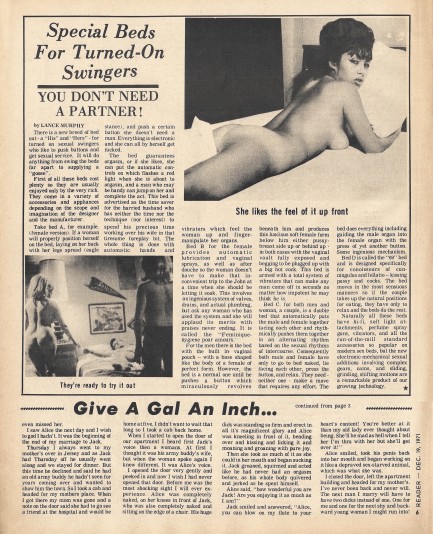 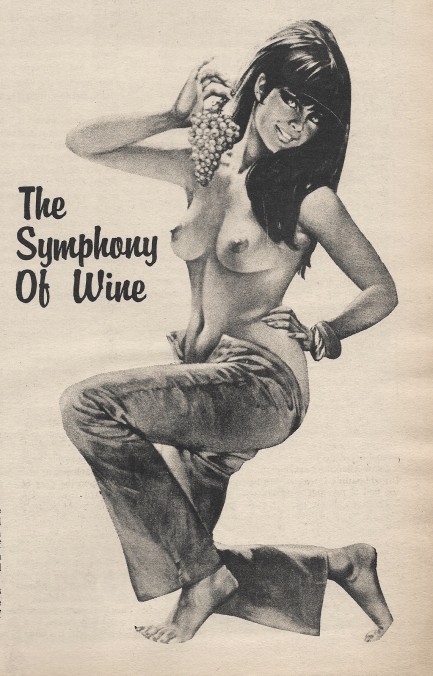  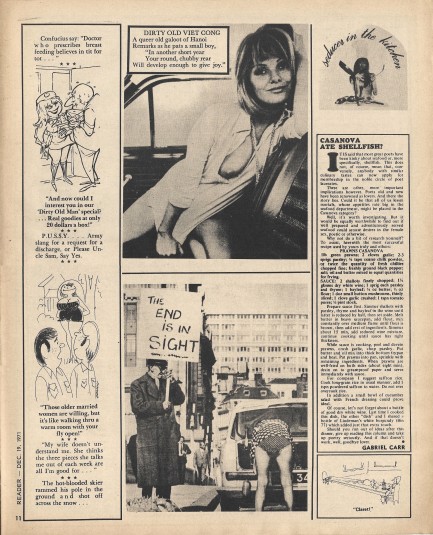 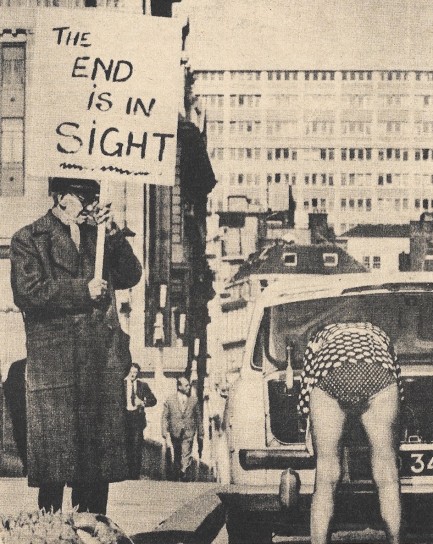 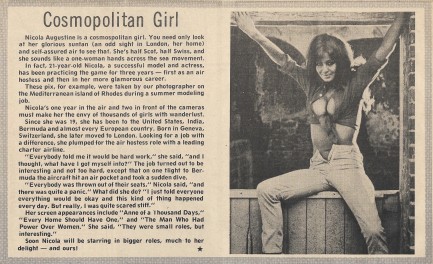 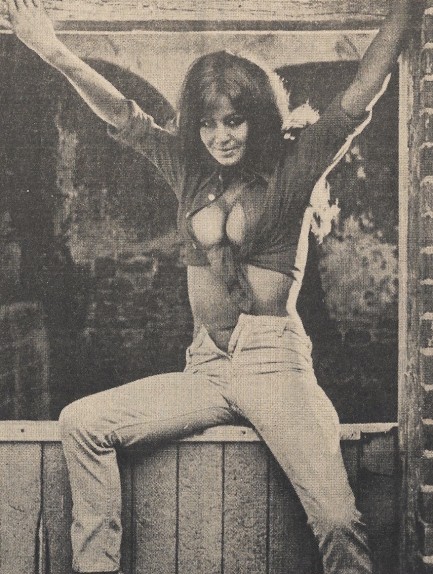 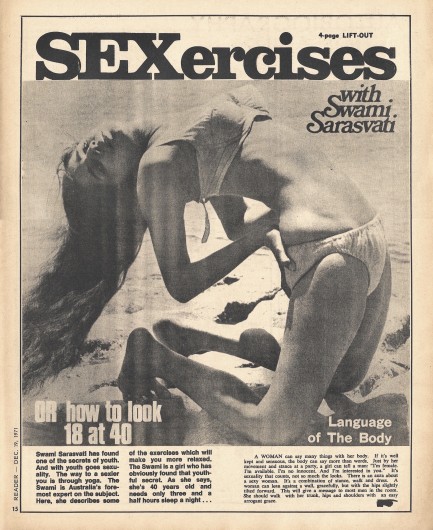 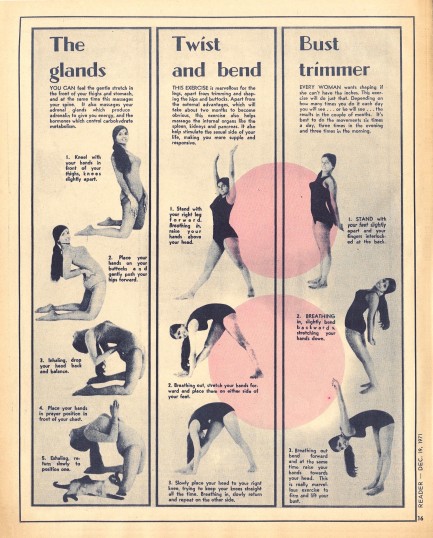 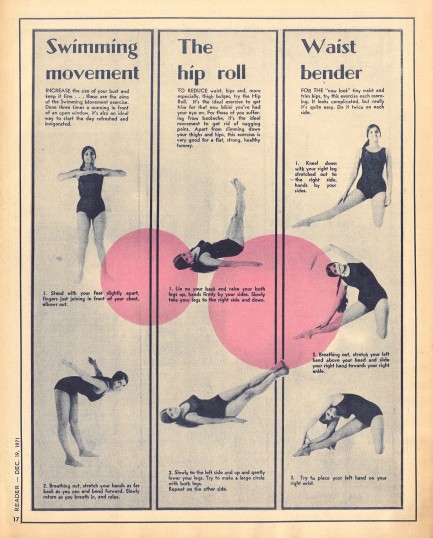    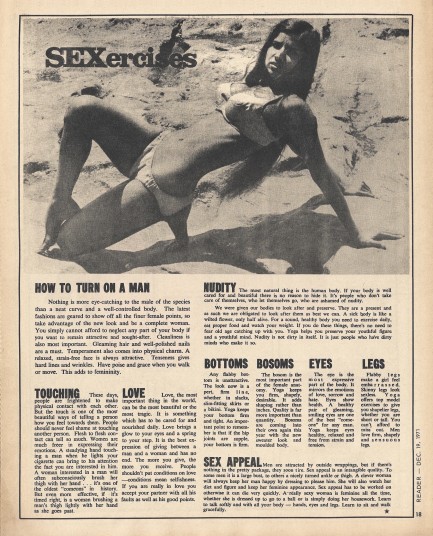 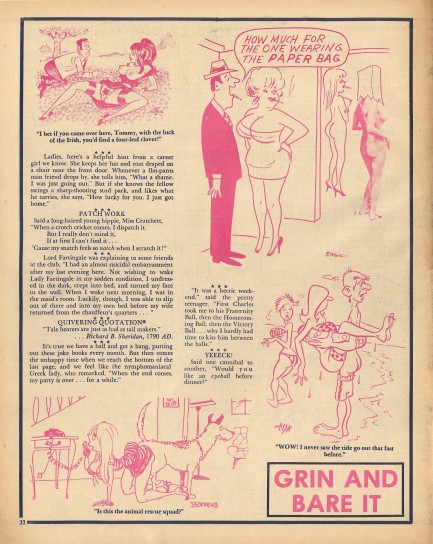
 Unwelcome messenger of God encounters major difficulties converting islanders. 
It sounds exactly like a story from a 1950s men's adventure magazine, except this story is true. A Christian missionary decided he wanted to convert the tribespeople of remote North Sentinel Island in the Indian Ocean. The island had been declared off-limits years ago by the Indian government due to the inhabitants' occasionally violent reluctance to be contacted by outsiders, but the missionary, named John Chau, refused to be deterred.
He located a fishing boat and several fishermen, and on November 15 they clandestinely and illegally traveled to the island. Being knowledgeable locals, the fishermen wouldn't get too close, so Chau covered the final 500 meters in a canoe while the hirelings awaited his return. Later that day Chau returned indeed—in a big hurry after having arrows shot at him. At this point we would have called it a day, and you too, no doubt. But that's why we aren't missionaries. We tend to give up. Chau didn't.
The next day, looking to build on his progress, he went back. This time the natives smashed his canoe—obviously considering this a significant hint as to their receptivity to Christian conversion. Chau, doubtless chagrinned, was forced to swim back to the fishing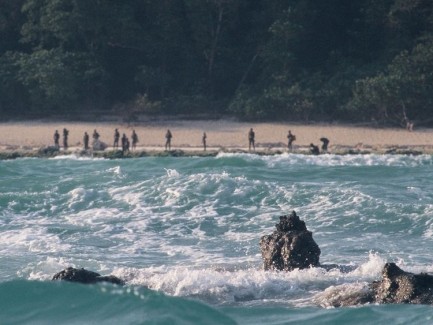 boat. But missionaries, as we noted, are persistent. So, driven by his duty to convert the islanders, he went back—amazingly—a third time. And how did that trip work out? According to the fishermen the last they saw of Chau the natives were dragging his corpse around the island. boat. But missionaries, as we noted, are persistent. So, driven by his duty to convert the islanders, he went back—amazingly—a third time. And how did that trip work out? According to the fishermen the last they saw of Chau the natives were dragging his corpse around the island.
Well. There's not much to say here. Who you feel is to blame in this scenario, if anyone, is a litmus test of your basic values. The fishermen have been arrested, but Chau's body hasn't been recovered yet due to obvious difficulties. The Indian government seems to want to let matters lie, but because Chau is American, the Sentinelese, as they've been dubbed, may yet pay a heavy price. One thing is certain—North Sentinel Island has dropped off our list of tropical paradises to visit. Now we're looking at maybe going to South Sentinel Island.  North Sentinel Island: stay away. North Sentinel Island: stay away.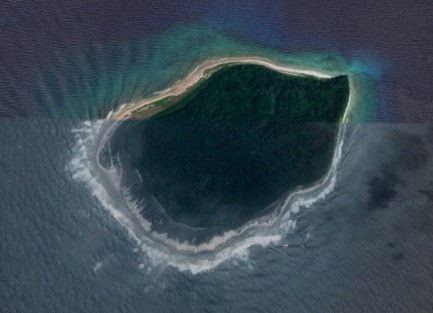 South Sentinel Island: worth a look. South Sentinel Island: worth a look.
 I'm not usually a quitter! But right now! I'm considering! Going back! To delivering pizzas! 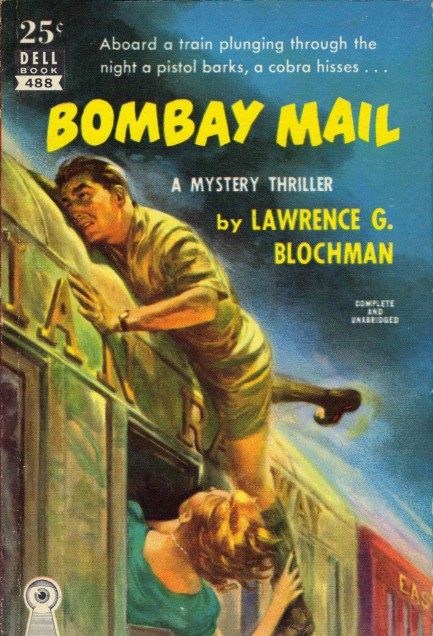
And speaking of trains, above you see the cover of Lawrence G. Blochman's novel of foreign intrigue Bombay Mail, a murder mystery set in India and staged on a Calcutta to Bombay mail train. The lead character isn't actually a postal worker, but rather an investigator, Leonidas Prike of the British C.I.D., also known as the Criminal Investigation Department. This was Blochman's debut, originally appearing in hardback in 1934, which was the same year another celebrated trainbound mystery—Murder on the Orient Express—was published.
About that copyright date, by the way. Nearly every place you look will have Bombay Mail listed as arriving in 1934, but it may have appeared, at least in limited form, in 1933. We deduced this because the movie Bombay Mail, which was based on the novel, premiered in the U.S. in January 1934. We have a hard time imagining a debut novelist selling his book to movies before it hit the stores, so 1933 might be the actual publication date. One thing we're sure about, though, is this Dell mapback edition arrived in 1943, and the art is by Robert Stanley. 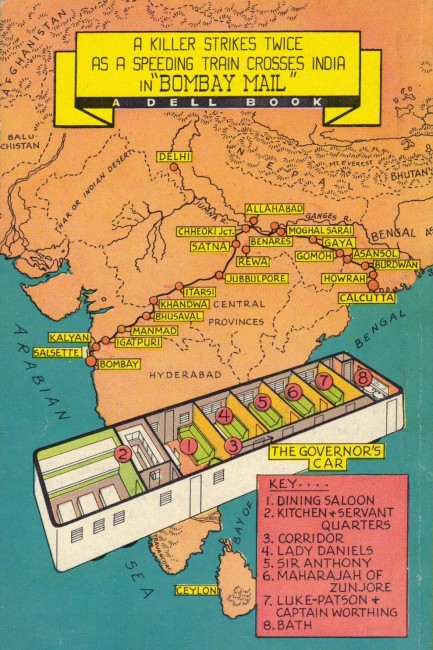
 There's nothing harder than facing your worst fear. 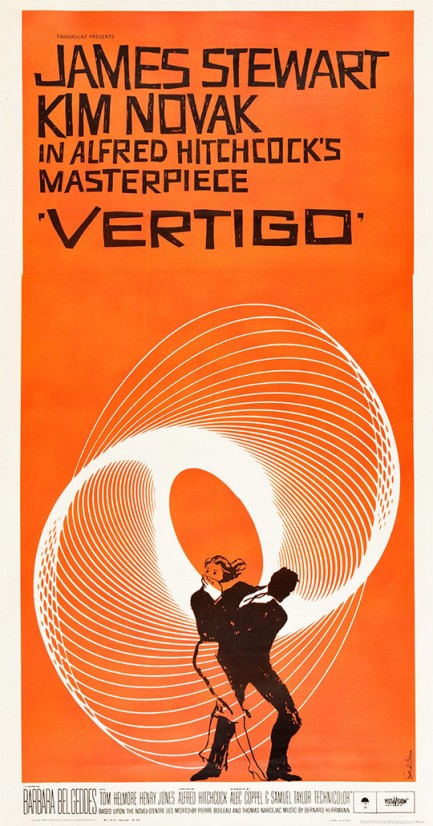
The poster for Alfred Hitchcock's 1958 thriller Vertigo, designed by Saul Bass, is one of the most famous and influential promos ever made. Bass actually can't take full credit for it—he oversaw its creation, but the unique spiral pattern was made by John Whitney and the figures were drawn by Art Goodman. Bass and Co. made a couple of similar versions of the poster for the film's U.S. run. We showed you one a while back, and now the above version completes the pair. If you haven't seen Vertigo, we can't tell you much that hasn't already been written. Four years after starring in Rear Window Jimmy Stewart plays another damaged man for Hitchcock, a San Francisco detective who has of fear of heights, the result of a rooftop chase gone wrong. He later gets involved in a mystery that puts his acrophobia to the ultimate test. Many say this is Hitchcock's best movie. We don't think so, but it's definitely a landmark, particularly as it relates to co-star Kim Novak's role, its opening action sequence, and its reliance upon San Francisco locations to help tell its story. In fact, the latter aspect was why the film's world premiere took place in San Francisco today in 1958. Below you see some screen grabs, along with a beautiful promo poster that was made for the movie's run in India. Put Vertigo in your queue. 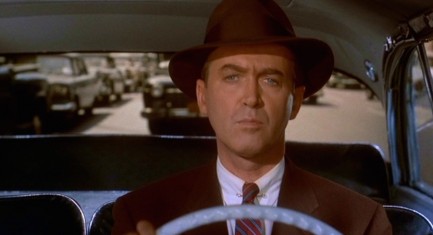 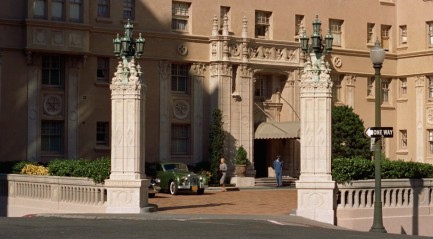 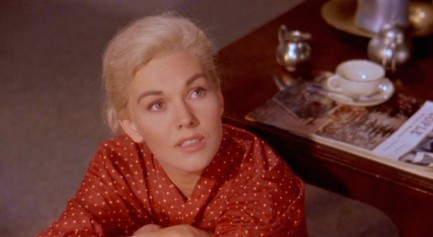 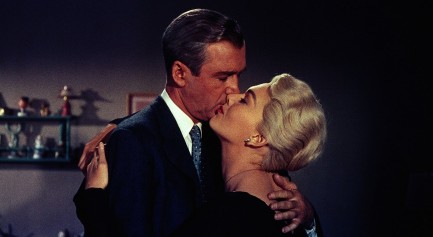 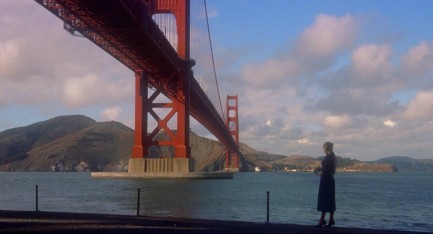 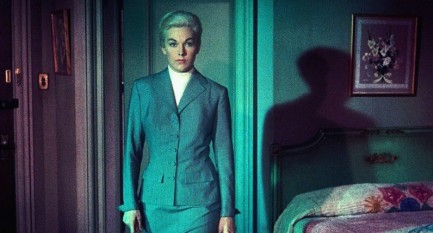 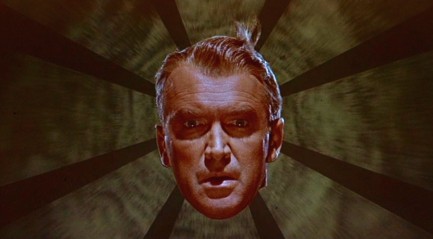 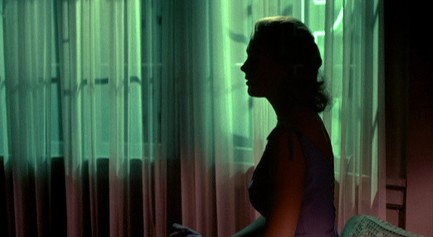 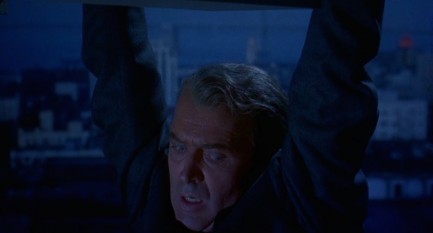 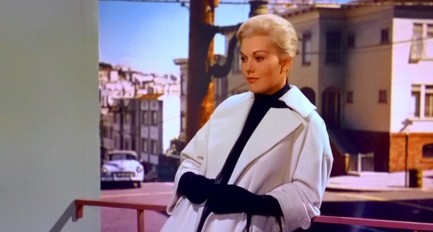 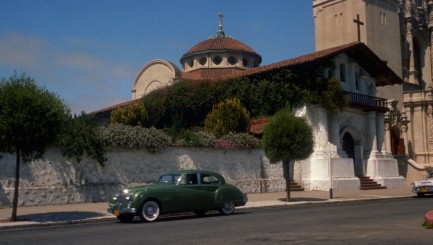 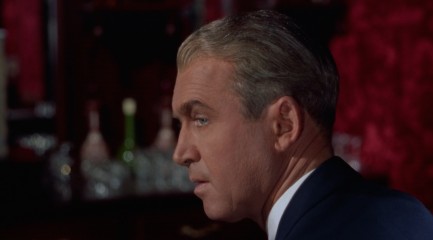 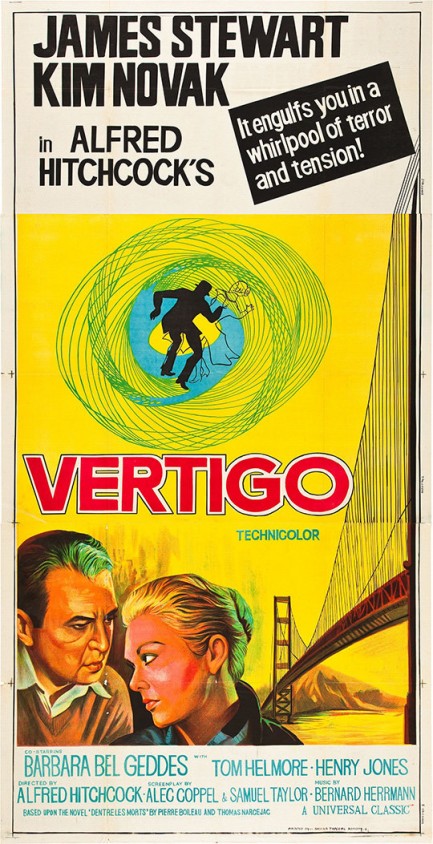
 She liked little boys when she was little, and she loves little boys now. 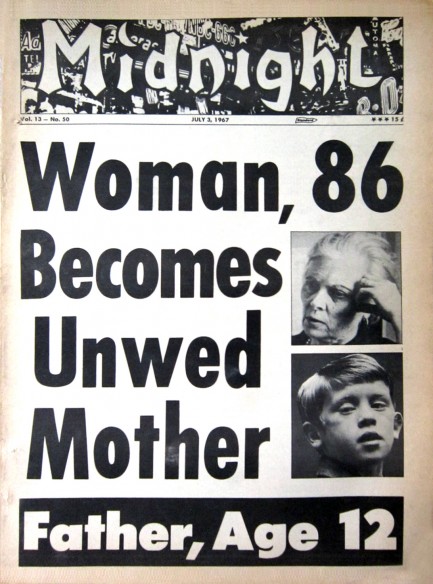
This issue of Midnight published today in 1967 has a cover that's the opposite of the last one we shared, which was about the world's youngest mother. This one has the world's oldest mother, and goes for the double tabloid whammy by adding an underaged father to the mix. According to the sources we checked, the oldest pregnancy confirmed by birth records occurred at age 70, a feat shared by three women, all of them, weirdly, from India. So this cover is not only untrue, but because it's fiction it casts doubt upon the previous claim from Midnight about the world youngest mom. We already knew that, though. Still, we do hope to be getting it on at eighty-six. Chances are slim, but it's a worthy goal.
 She has a classic case of cold feet. 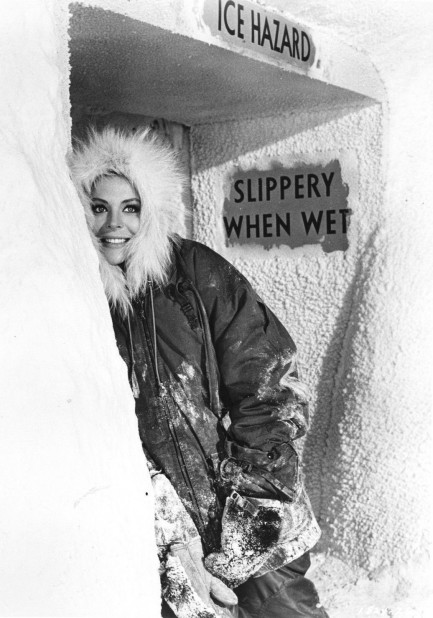
British actress Janine Gray must really be suffering in this cold. She was born in Bombay, India, and though she left at age five, may have been there just long enough to get used to the tropical weather. Her show business career was short, but she did appear in some of the better television series of the 1960s, including The Avengers, The Man from U.N.C.L.E., The Saint, and The Alfred Hitchcock Hour. The shot above was made to promote her role in the cinematic comedy Quick Before It Melts, which is set in Antarctica. Luckily for Gray it was filmed in California. But that's a place that can feel pretty cold too, when you have no pants. See below. 1964 copyright on these images.
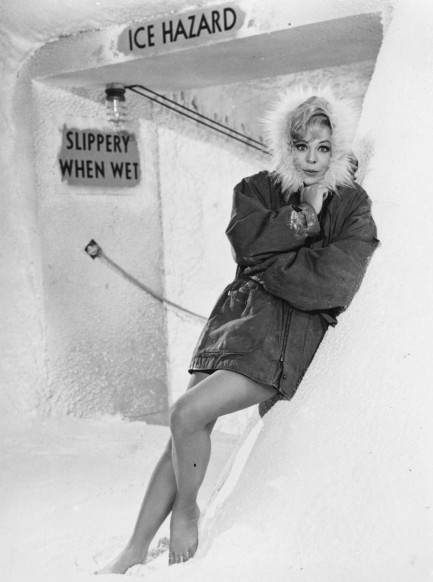
 Just point me to the palest of your women. She's the one I want. 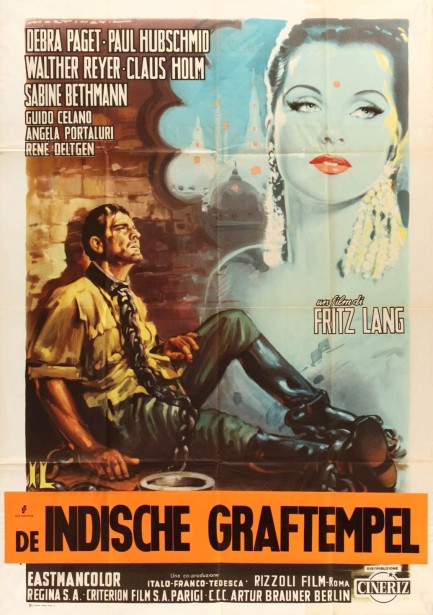
This Dutch poster promotes De indische graftempel, which was originally a West German production called De indische grabmal, and later given the English titles The Indian Tomb and The Tomb of Love. Made by Fritz Lang, this was the fourth pass at a 1918 novel by Thea von Harbou, but this version strays far from the source material. The book is about an architect commissioned by a Maharaja to build a fantastic tomb, but who later discovers it's for the Maharaja's wife, who will be killed for being a generally unfit spouse and placed in the structure as soon as it's completed. This is an interesting plot premise, and as a bonus it must have made for some fun jokes between Lang and von Harbou, since they had been married for a time but were divorced when they worked together here. The adaptation they came up with 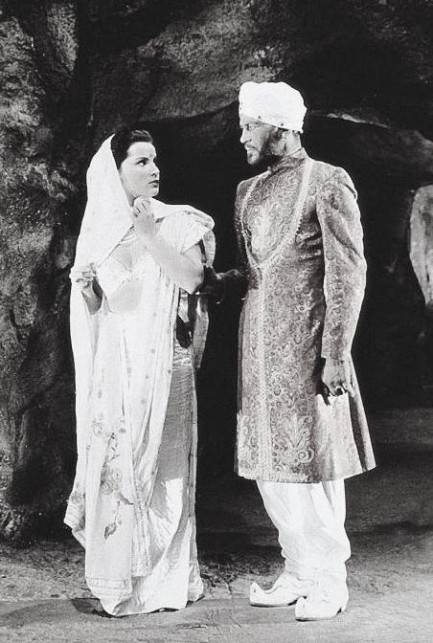 relegates the architect to secondary status, and instead focuses on the wife Seetha, played by Debra Paget, who is having an affair with a Western lover named Harald, played by Paul Hubschmid. relegates the architect to secondary status, and instead focuses on the wife Seetha, played by Debra Paget, who is having an affair with a Western lover named Harald, played by Paul Hubschmid.
Just to get right to the heart of it, this isn't one of Lang's best efforts. Despite good location work and excellent sets, the romance is silly, the adventure elements are uninspiring, and there's no emotional realism at all. But the movie is instructive in one area—it could be a case study for this year's Academy Awards race controversy. Every Indian role of consequence is played by a white person in shoe polish. This was the norm back then and it happened in hundreds if not thousands of films. Now, after nearly a century of such silliness, some people are actually offended at demands that ethnic roles be played by ethnic actors, and lead roles be diversified. Those demands are beyond fair. For decades nobody made even a peep about white actors in brown makeup, let alone the industrywide denial of good roles to actors of color, but as soon as someone says maybe Joseph Fiennes shouldn't play Michael Jackson in a film or Star Wars should have a black lead it's suddenly racism against whites. You almost have to laugh. What's also funny is that Paget, though she's supposed to be Indian, is without dark coloration. This is another norm for the period—amidst the brown hordes the most beautiful woman is always the palest.
All that said, watching the spectacle of literally a dozen West German actors in brown make-up is actually quite funny in today's context. But the main attraction here is Paget, whose erotic dance routine before ranks of spray-tanned slaves and beneath a looming, twenty-foot-high, giant-boobed Hindu statue is one of cinema's great sequences. We don't mean great in terms of acting or dancing or directing. It's an immortal moment the same way Alicia Vikander looking at herself in a mirror in Ex Machina is, or Sharon Stone flashing her ragamuffin in Basic Instinct. It's one of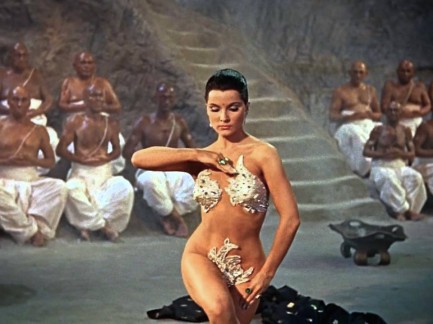 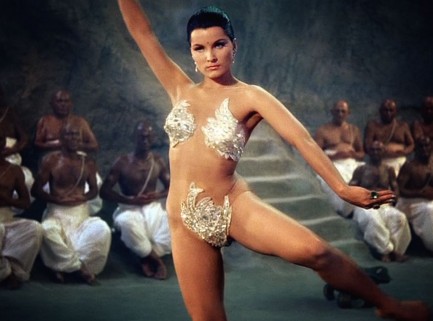 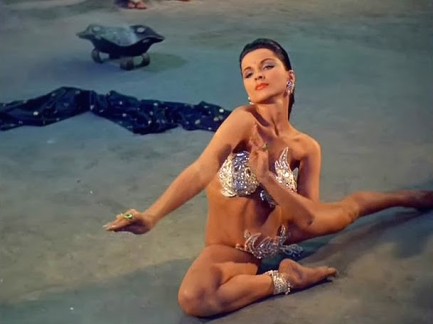 those instances when mainstream filmmakers push everyone's comfort envelope and remind them that sex is actually the single most important aspect of all our lives. Save for a tiny subset of us, we all exist because of it, our existence can only be assured by having more of it, and pretending it isn't on all our minds much of the time is just a silly rule imposed by the people who conceived our civilizational costume party. In the envelope-pushing respect De indische graftempel is a roaring success. Otherwise, not so much. It premiered today in 1959. those instances when mainstream filmmakers push everyone's comfort envelope and remind them that sex is actually the single most important aspect of all our lives. Save for a tiny subset of us, we all exist because of it, our existence can only be assured by having more of it, and pretending it isn't on all our minds much of the time is just a silly rule imposed by the people who conceived our civilizational costume party. In the envelope-pushing respect De indische graftempel is a roaring success. Otherwise, not so much. It premiered today in 1959.
 The message in this bottle is easy to read. 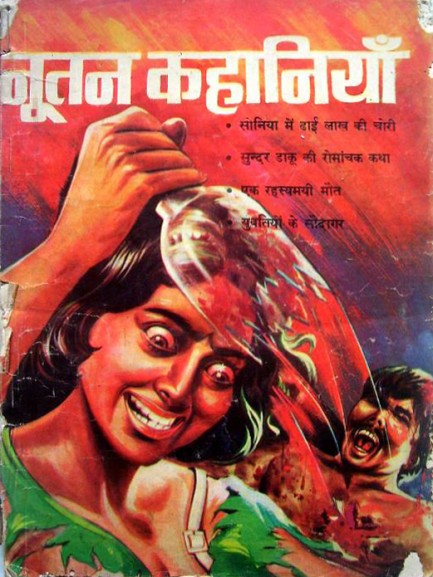
Above is the cover of an Indian crime magazine called Nutan Kahaniyan, showing a wild-eyed woman delivering a pretty firm message with a broken bottle, circa 1976. Crime magazines have long been popular in India. In fact, the writer Aravind Adiga explained in his great novel The White Tiger that today “rape and murder” magazines are sold in every newsstand in the country, and are particularly popular among poor servants. But he cautions the wealthy to remain calm—even though millions of servants are secretly thinking of murdering their bosses, violent magazines are an outlet for the urge. It’s when servants start reading Gandhi and the Buddha that the wealthy should commence pissing their pants. Today there is still a magazine in existence in India called Nutan Kahaniyan, but as far as we can tell it has nothing to do with the lurid version you see above. Anyway, this is a great little artifact from a country we rarely feature, and we love the cover. We’ll see if we can find more from India moving forward.
 Marie McDonald gives her minders the slip in Australia. 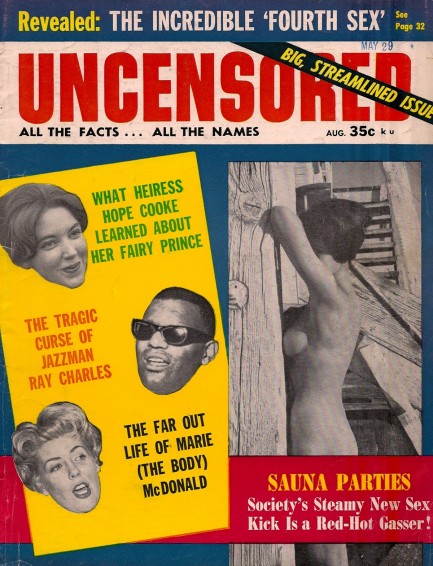
Today we’re getting back to what we do well with some scans and tawdry tales from a mid-century tabloid—this time it’s Uncensored, published this month in 1965. There’s quite a bonanza inside. You get stories on Ray Charles’ ongoing narcotics problems, Jack Paar’s runaway ego, the health fad of Finnish saunas, and the astounding “fourth sex” (castratos, in case you’re curious). There’s also interesting coverage of American socialite Hope Cooke’s marriage to Crown Prince Palden Thondup Namgyal of a place called Sikkim, a Himalayan monarchy that is now a part of India. When Cooke married the prince in 1963 she became the second most famous American to marry into royalty (after Grace Kelly). The marriage made her a Maharajkumari, which has a nice ring to it, but the union was not successful. An amusing subhead on Uncensored scribe Aldo Ceruzzi’s article encapsulates the problem: Sophisticated though she is, it’ll take lots of doing to overlook those concubines! But the story we’re most interested in here is the one on American actress/singer Marie McDonald. We wrote about her before, her infamous nocturnal disappearance from her house, her discovery in the desert, and her weaving a story of abuse and abduction and placing the blame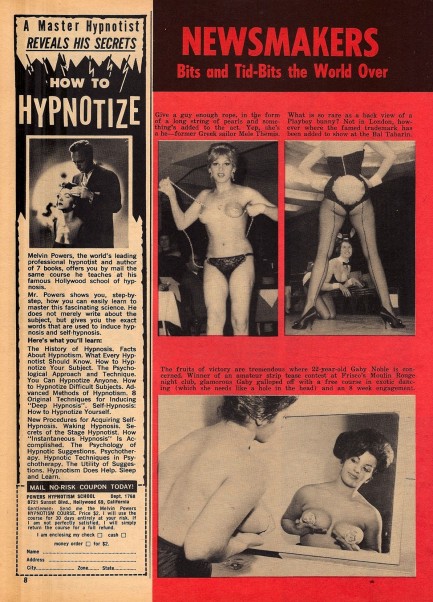 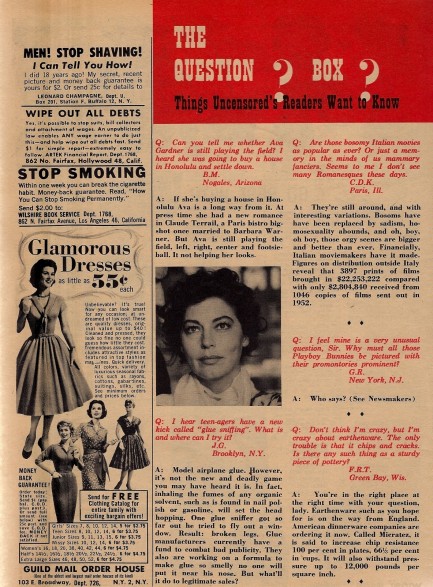 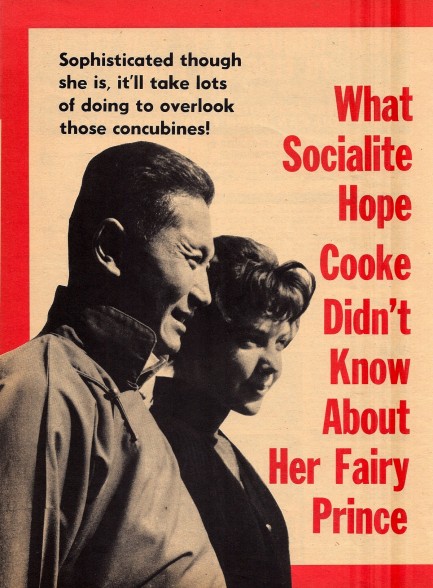 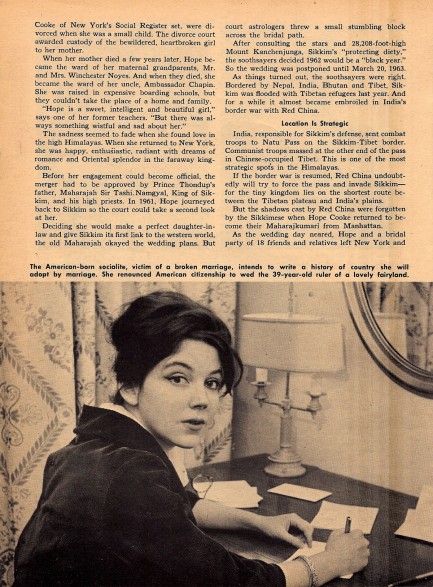 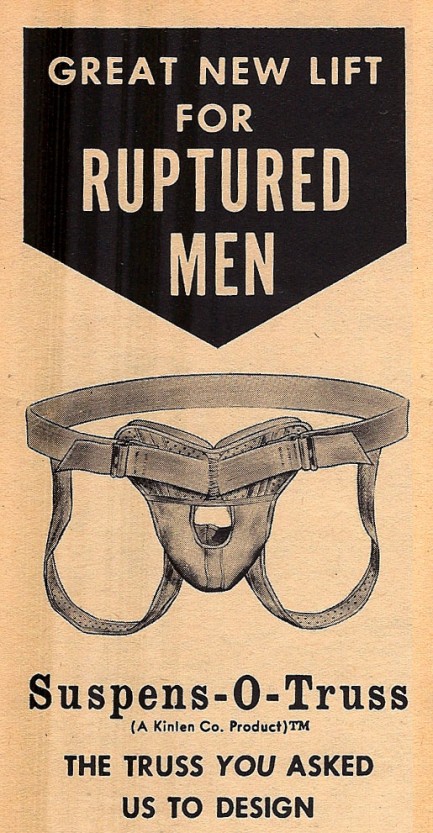 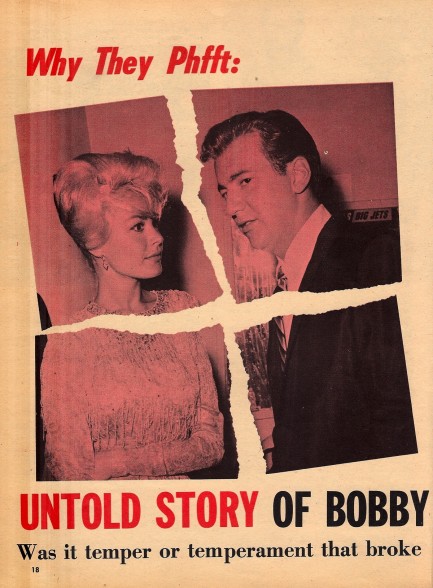 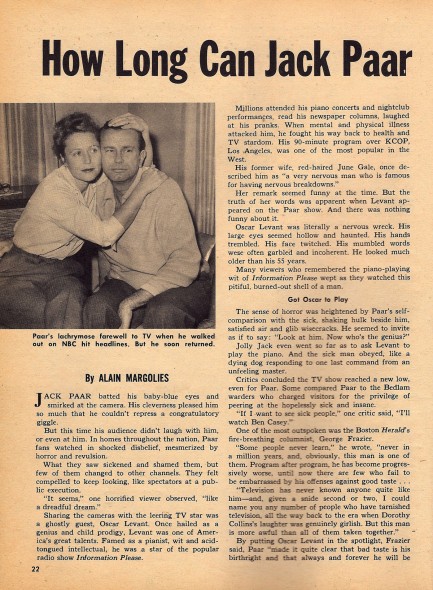 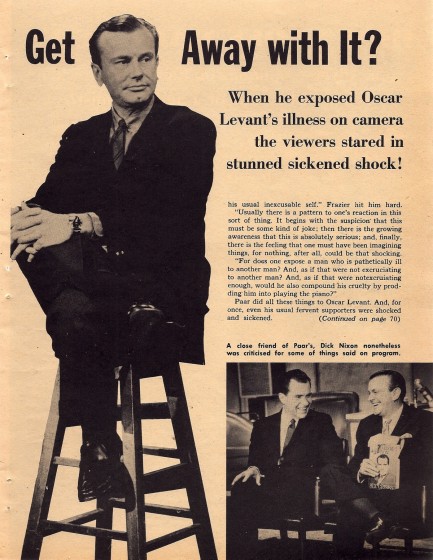 on two “swarthy” assailants. The cops dismissed her story out of hand, but Uncensored gives us a bit of new information on the debacle: But Marie was able to save the $8,000, six-carat diamond ring she was wearing at the time of the alleged snatch. Her unusual safe deposit box was discovered when a doctor examined her for evidence of [rape]. Probing south of the border, he found there were diamonds in them thar hills! on two “swarthy” assailants. The cops dismissed her story out of hand, but Uncensored gives us a bit of new information on the debacle: But Marie was able to save the $8,000, six-carat diamond ring she was wearing at the time of the alleged snatch. Her unusual safe deposit box was discovered when a doctor examined her for evidence of [rape]. Probing south of the border, he found there were diamonds in them thar hills! Well, wow. Just wow. And you notice how Uncensored slipped the words “snatch” and “box” into the account? Again, wow. Was that an accident? Noooo. No possible way. Most of the McDonald story, though, is actually about an incident that occurred several months before this issue of Uncensored was published in which she escaped from an Australian mental clinic (or “booby barn,” in Uncensored parlance). The scandalous aspect is not her escape, but the fact that she spent the next forty hours at the home of a “handsome admirer” she had met days earlier. What happened there? The imagination runs wild—with a little help from Uncensored. McDonald’s ongoing personal difficulties had 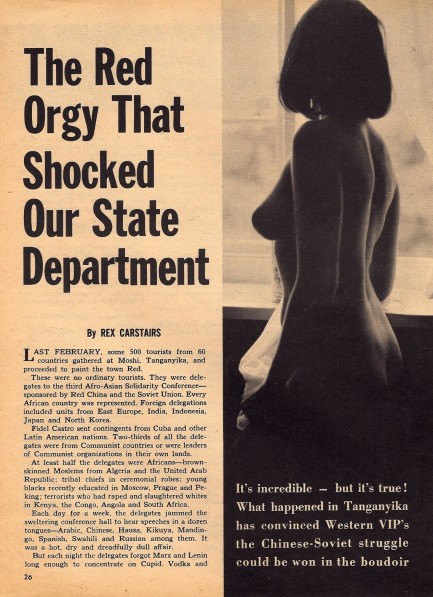 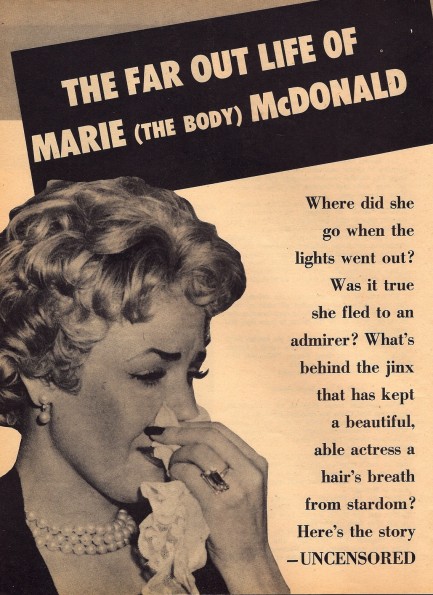 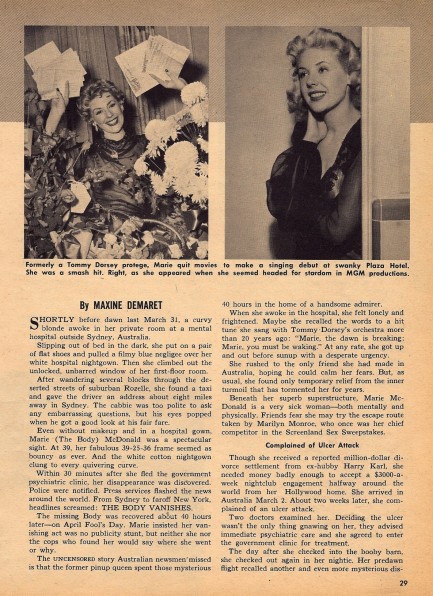 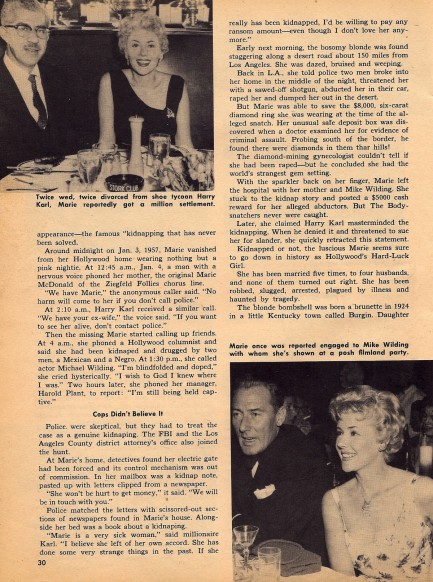 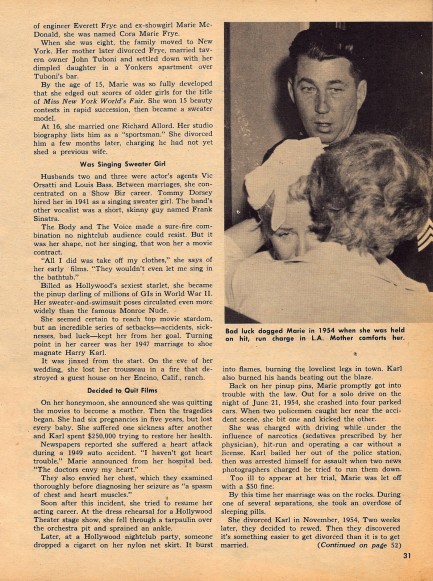 years ago overshadowed her career, so readers were probably not surprised to come across yet another strange story about the sex symbol nicknamed "The Body." Seven marriages will have a tendency to turn one into the butt of jokes. But though Uncensored makes light of McDonald in that cutting way tabloids do, her life was truly no laughing matter—she committed suicide just two years after this issue appeared, in 1965. We will have more from Uncensored soon.  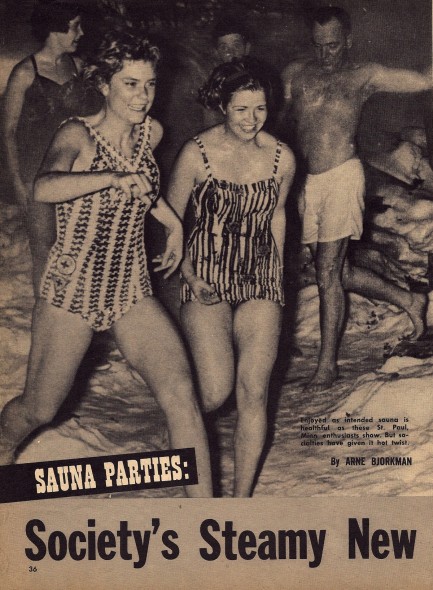 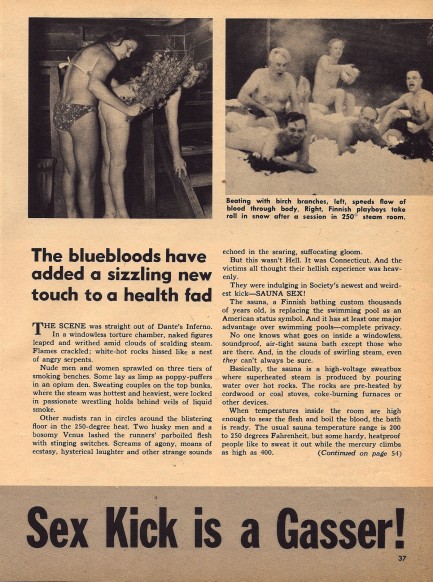 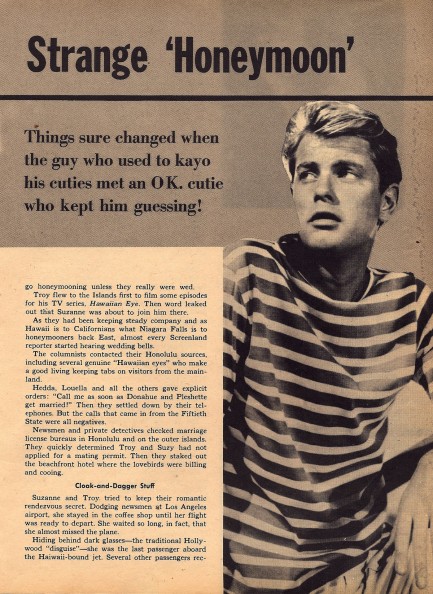 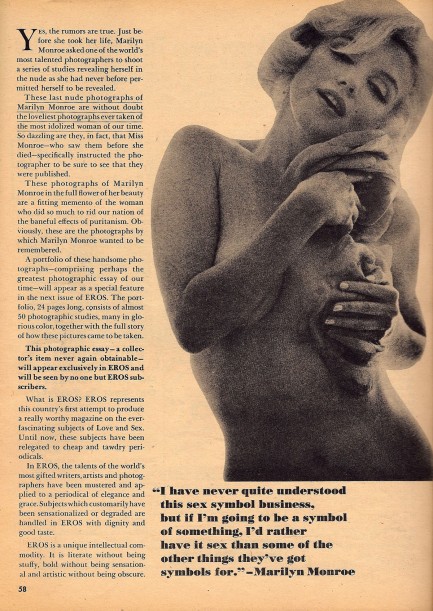 
 The correct answer is always: “Why yes, I do want to keep on truckin’. 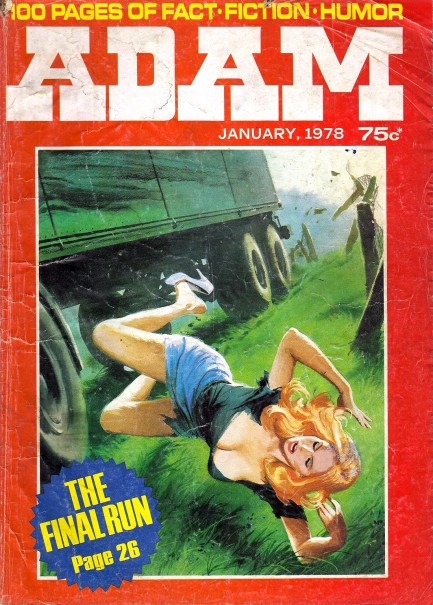
Above is a January 1978 cover for Australia’s Adam, a magazine you know well by now if you frequent this site. The art here illustrates Terry P. Duval’s story “The Final Run,” in which a hapless truck driver picks up what he thinks is a damsel in distress, but who soon shows she’s a pure femme fatale. Adam began in 1946, and this is the magazine near the end—it folded, looks like, in May 1978. Inside this issue you get the usual literary, artistic and photographic treats, including five pages of Patti Clifton shots, plus skiing Nazis, and a profile of the notorious but misunderstood Tokyo Rose, who we wrote about last year.
Readers also get to visit a Dakhma, aka Tower of Silence, a Zoroastrian structure where dead bodies—considered in the religion to be unclean—are left to be sun baked and picked apart by scavenging birds, thus preventing putrefaction which would pollute the earth. Mmm. Fun! The author visits a tower near Yazd, Iran, and must have gotten there just before the government shut all such structures down permanently. Today, the only towers still used for ritual exposure are in India. So put those on your travel itinerary. And lastly, on the rear page, you get Paul Hogan in another ad for Winfield cigarettes. Forty-seven scans appear below.
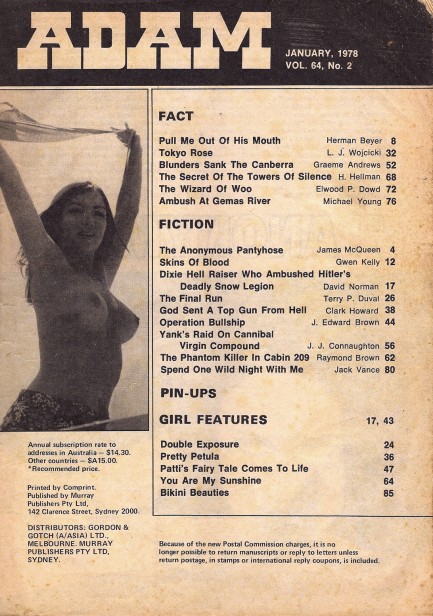 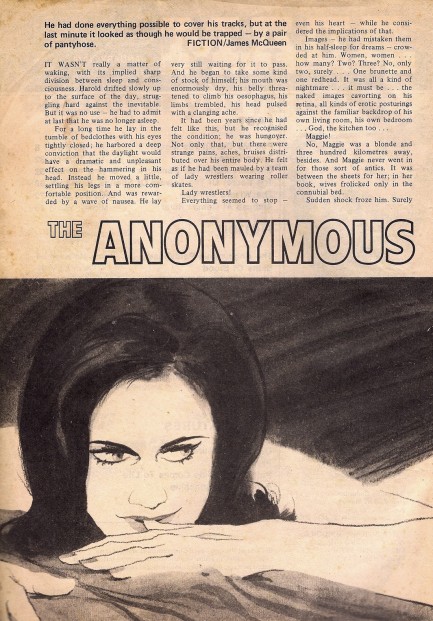 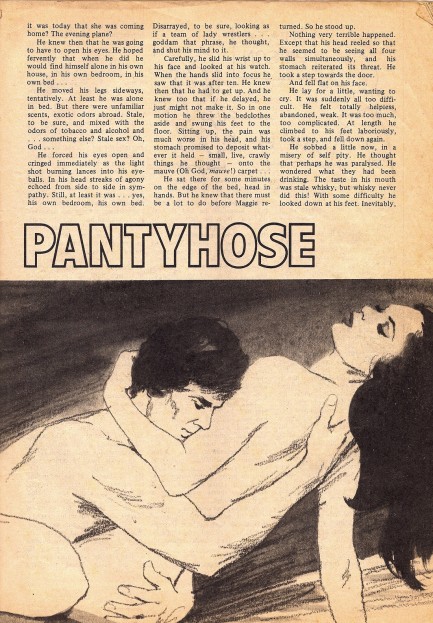 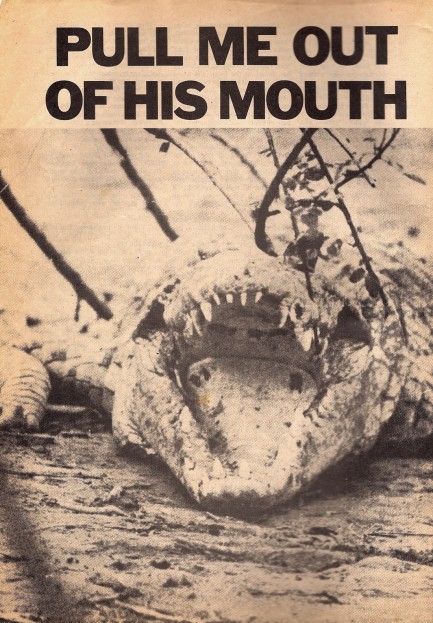 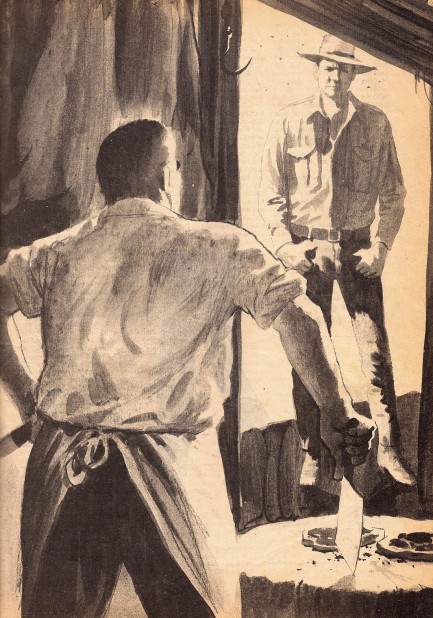  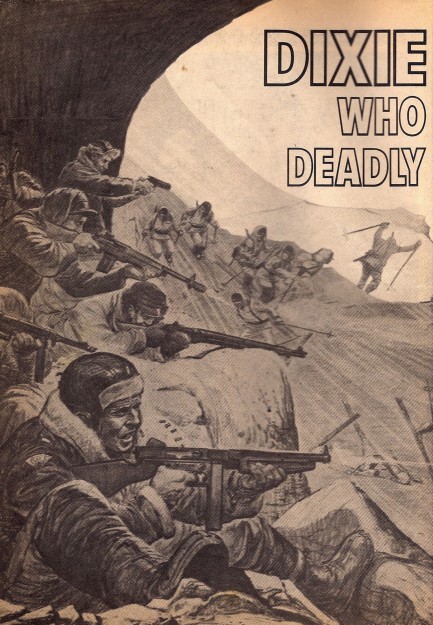 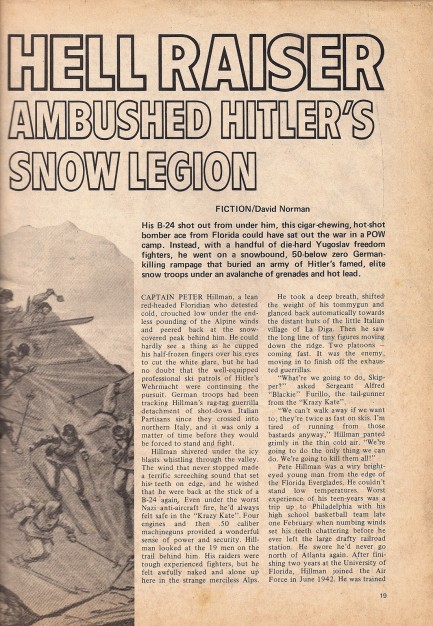  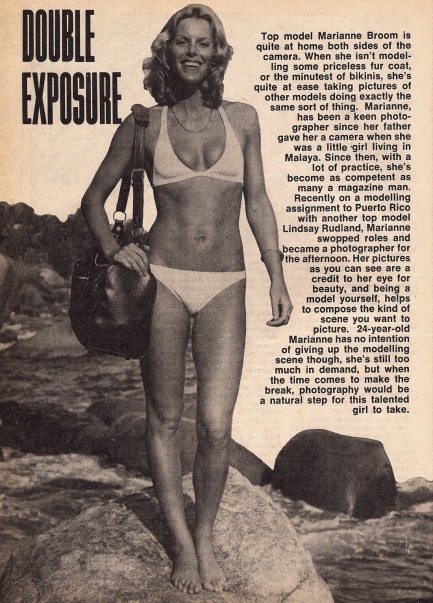 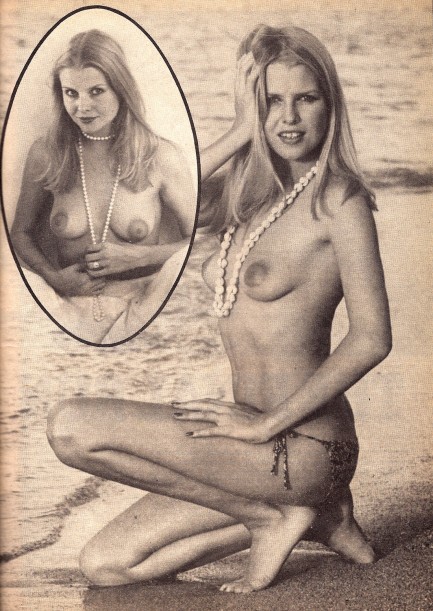 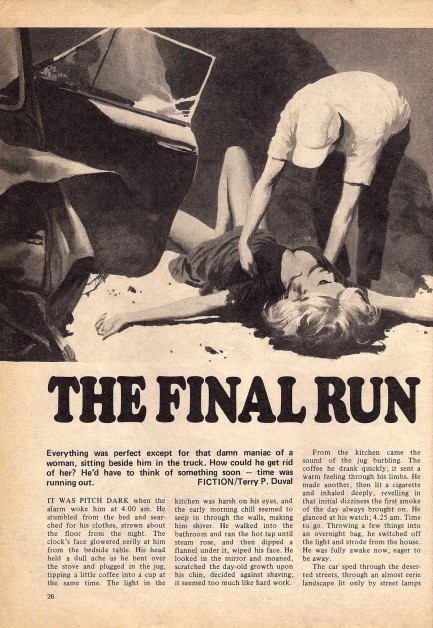 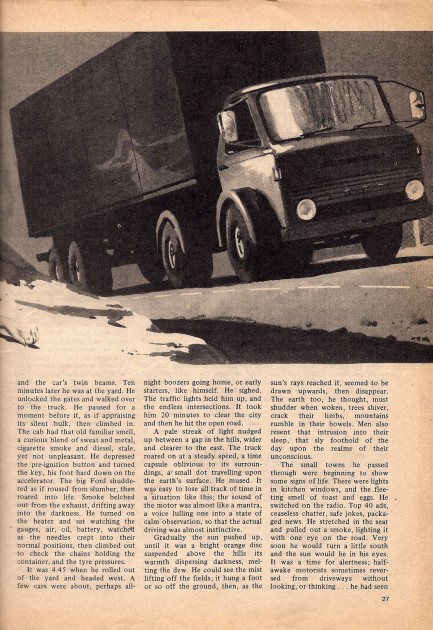  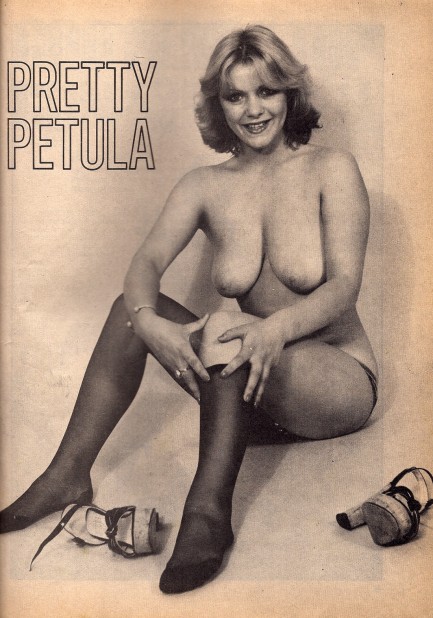  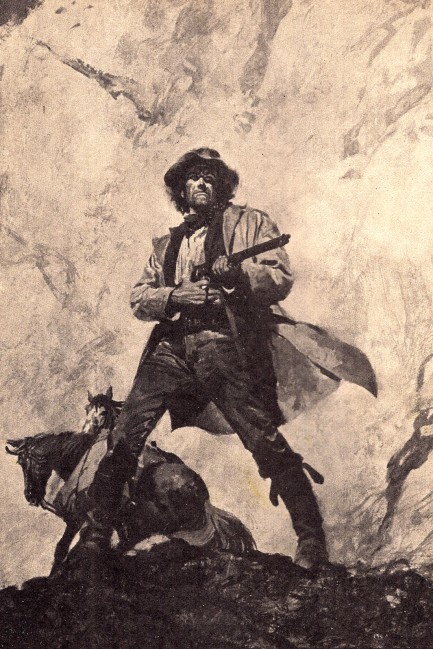 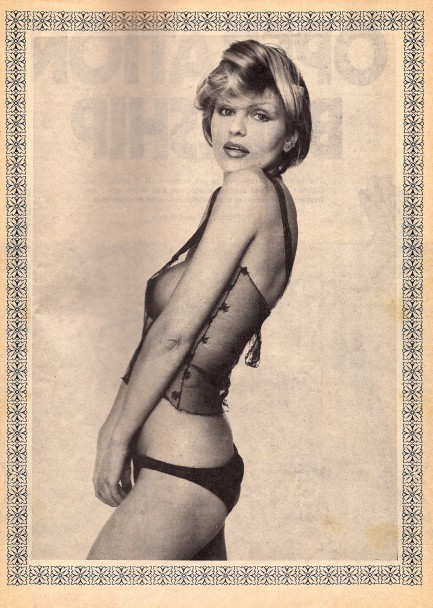 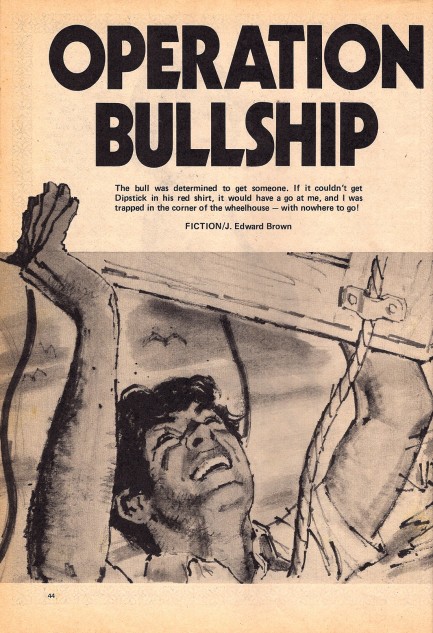 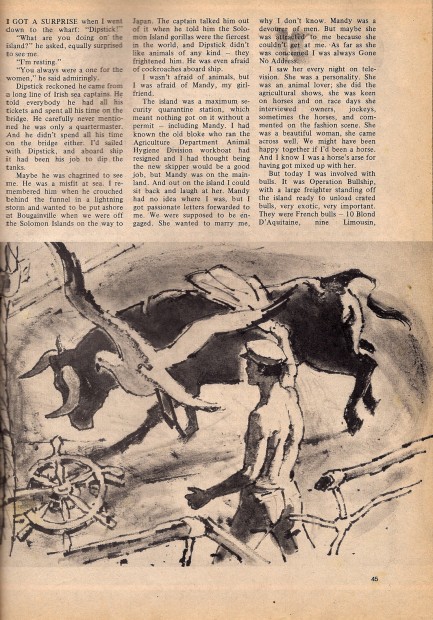 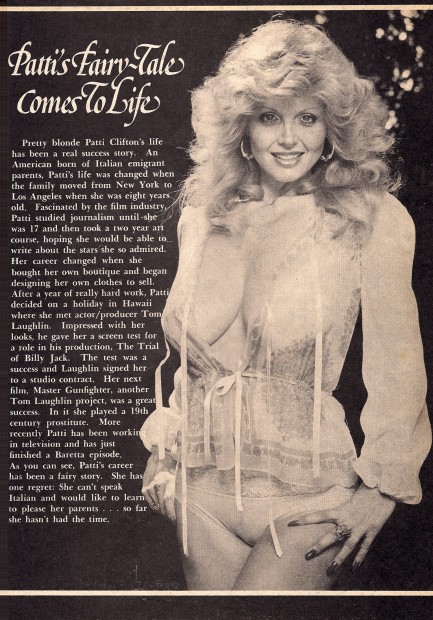 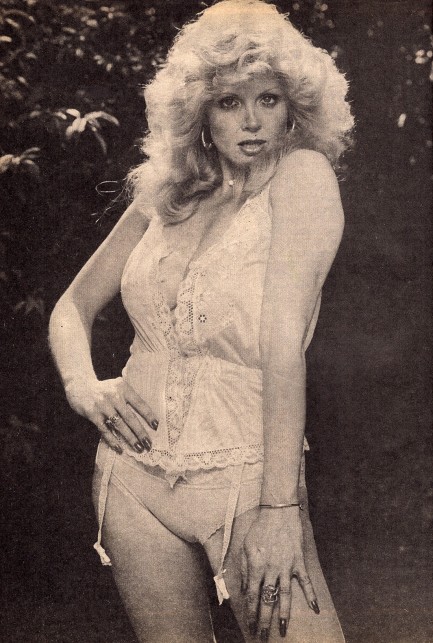  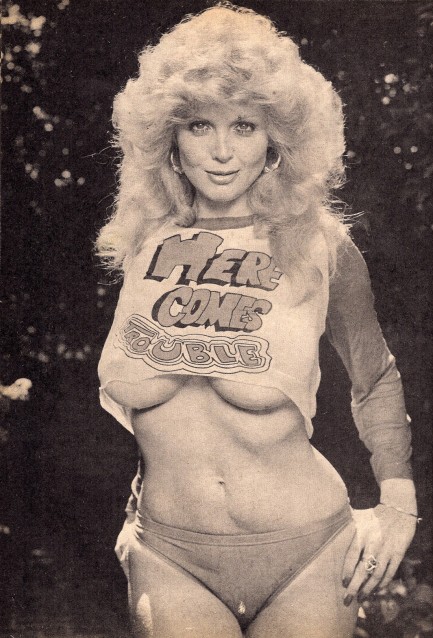 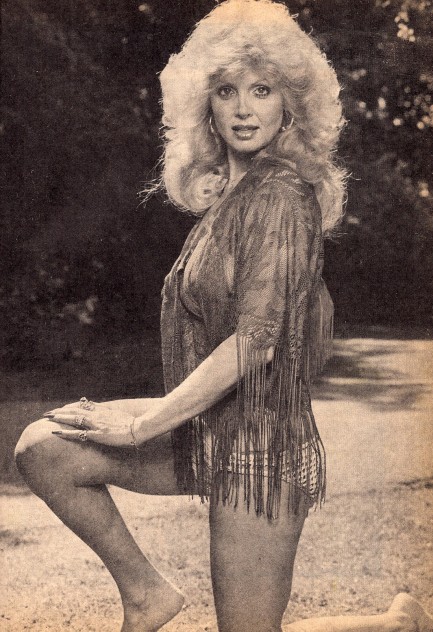 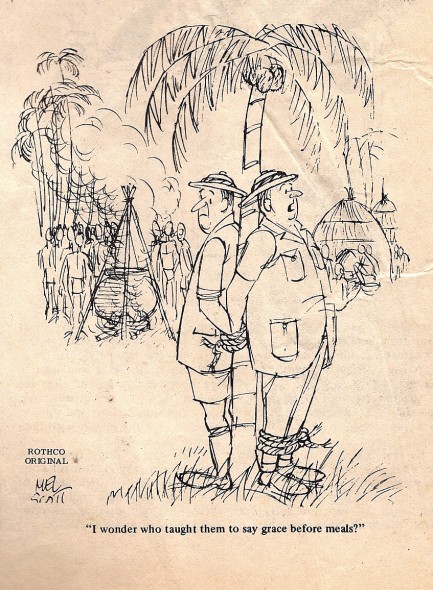 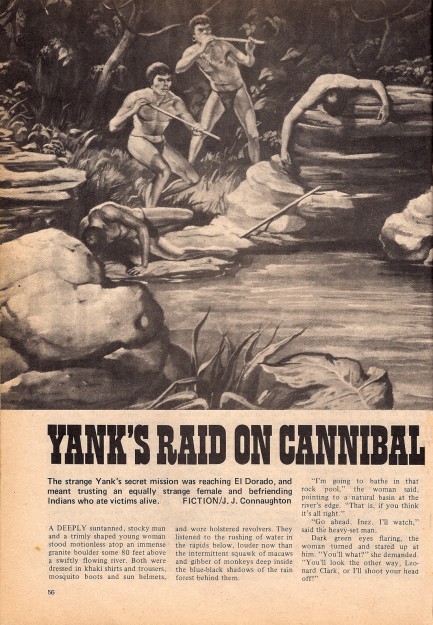 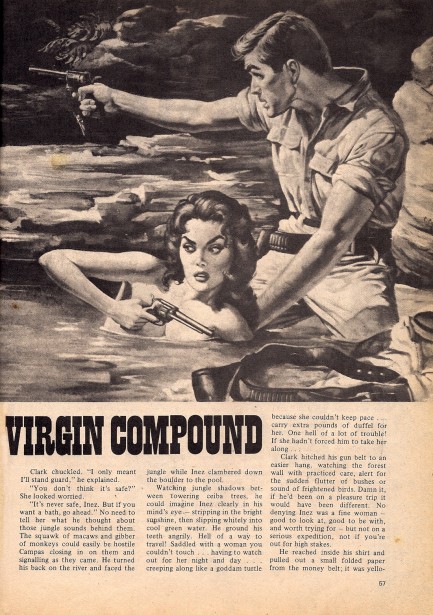 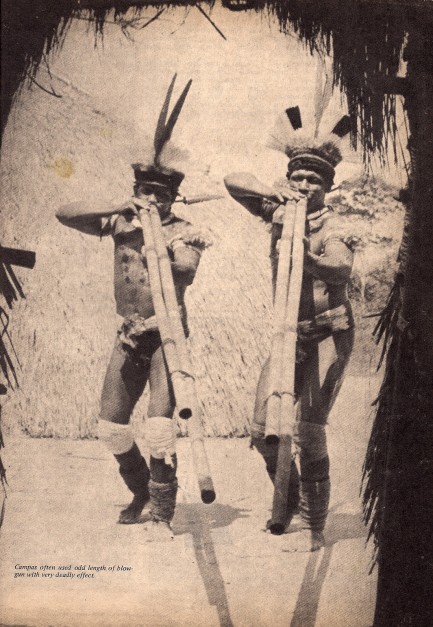 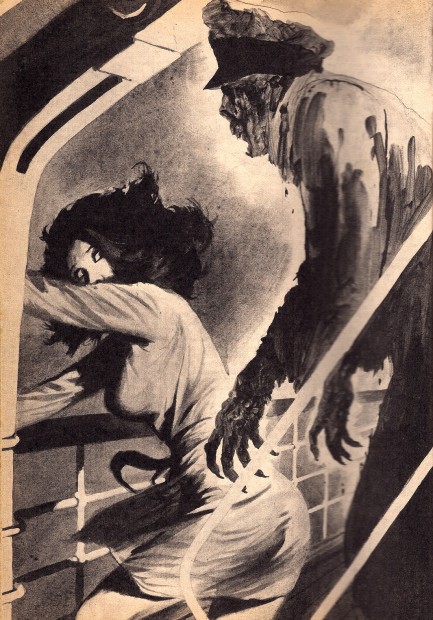 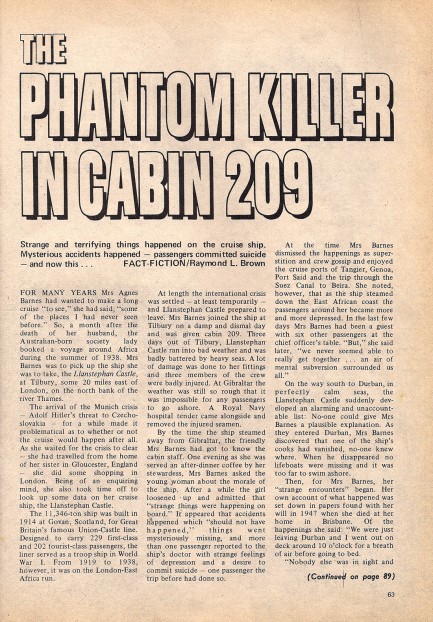 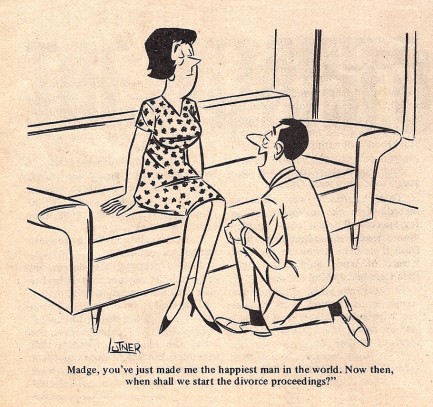 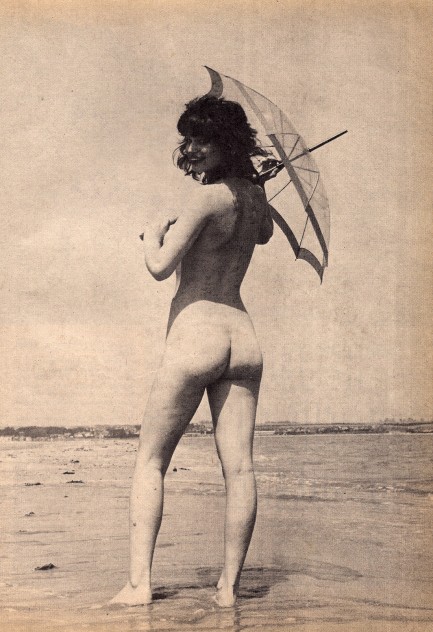 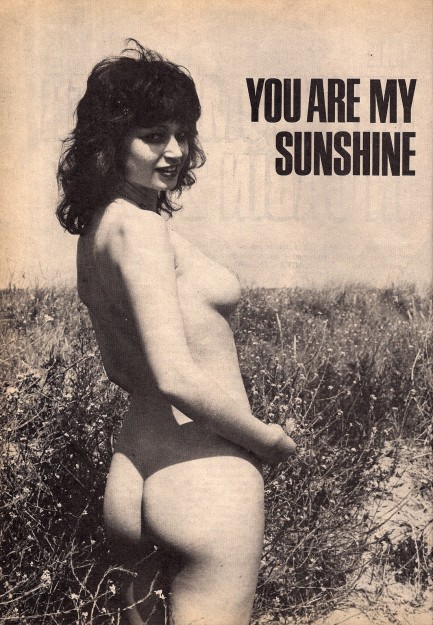 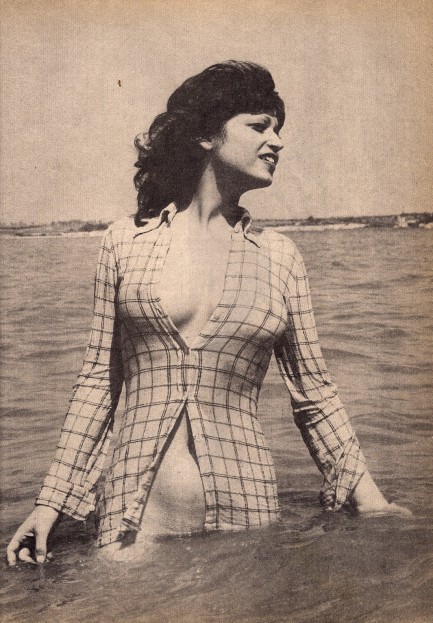 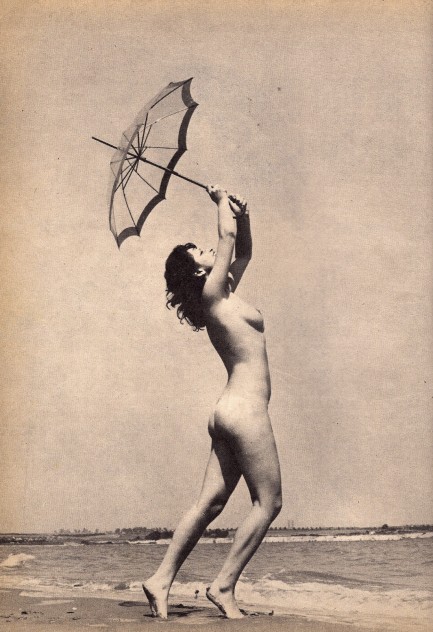 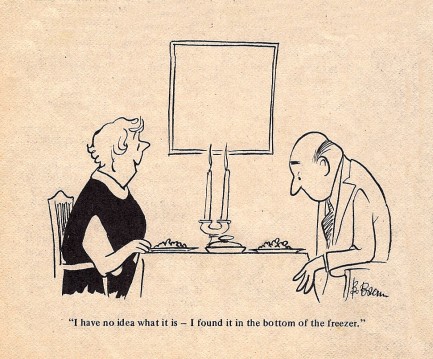 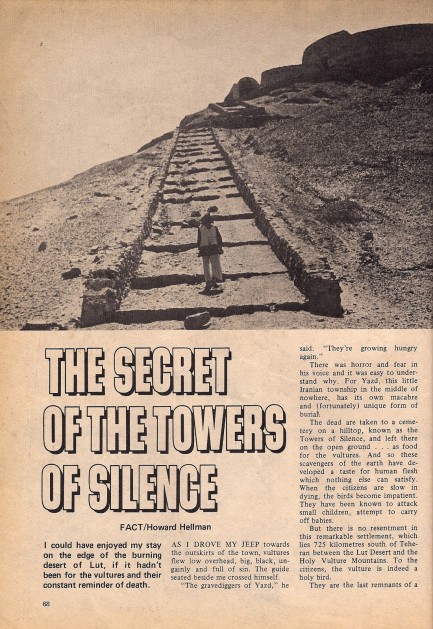 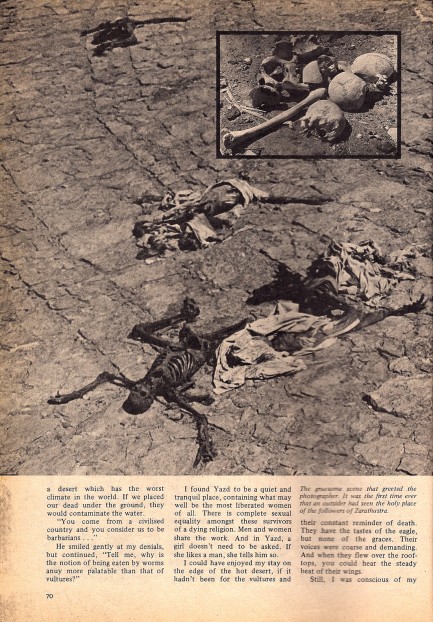 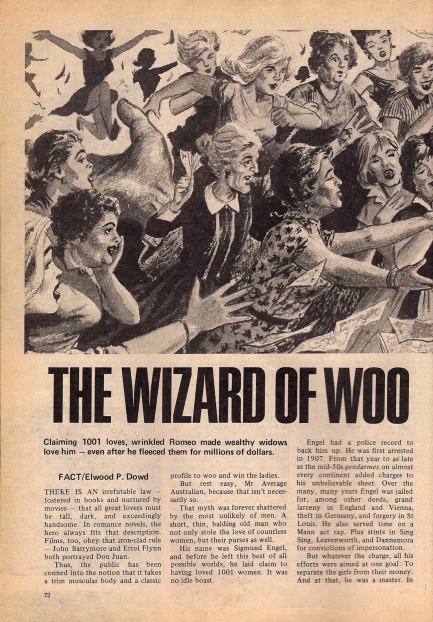 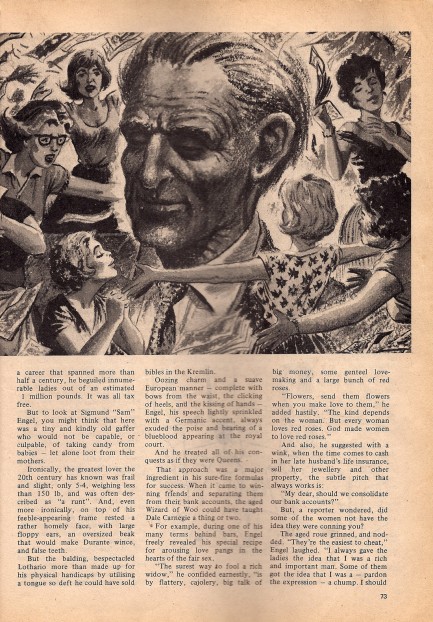 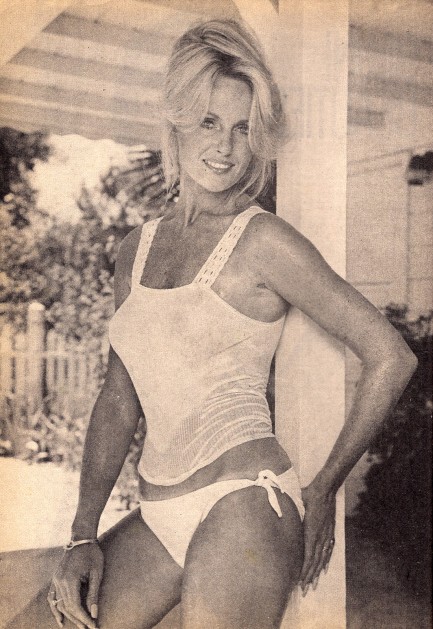 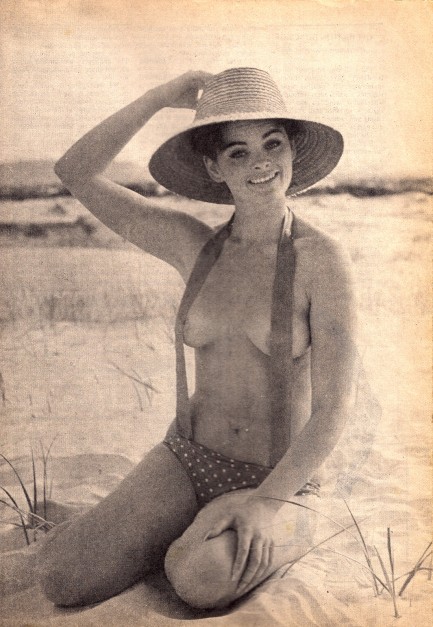 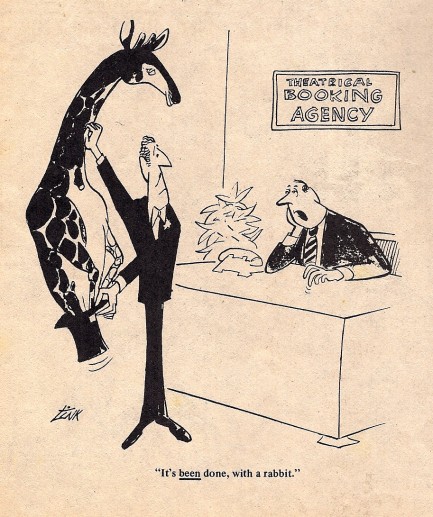  
 |  |
|
 |

The headlines that mattered yesteryear.
1927—Mae West Sentenced to Jail
American actress and playwright Mae West is sentenced to ten days in jail for obscenity for the content of her play Sex. The trial occurred even though the play had run for a year and had been seen by 325,000 people. However West's considerable popularity, already based on her risque image, only increased due to the controversy. 1971—Manson Sentenced to Death
In the U.S, cult leader Charles Manson is sentenced to death for inciting the murders of Sharon Tate and several other people. Three accomplices, who had actually done the killing, were also sentenced to death, but the state of California abolished capital punishment in 1972 and neither they nor Manson were ever actually executed. 1923—Yankee Stadium Opens
In New York City, Yankee Stadium, home of Major League Baseball's New York Yankees, opens with the Yankees beating their eternal rivals the Boston Red Sox 4 to 1. The stadium, which is nicknamed The House that Ruth Built, sees the Yankees become the most successful franchise in baseball history. It is eventually replaced by a new Yankee Stadium and closes in September 2008. 1961—Bay of Pigs Invasion Is Launched
A group of CIA financed and trained Cuban refugees lands at the Bay of Pigs in southern Cuba with the aim of ousting Fidel Castro. However, the invasion fails badly and the result is embarrassment for U.S. president John F. Kennedy and a major boost in popularity for Fidel Castro, and also has the effect of pushing him toward the Soviet Union for protection.
|

|
|

It's easy. We have an uploader that makes it a snap. Use it to submit your art, text, header, and subhead. Your post can be funny, serious, or anything in between, as long as it's vintage pulp. You'll get a byline and experience the fleeting pride of free authorship. We'll edit your post for typos, but the rest is up to you. Click here to give us your best shot.

|
|





















 boat. But missionaries, as we noted, are persistent. So, driven by his duty to convert the islanders, he went back—amazingly—a third time. And how did that trip work out? According to the fishermen the last they saw of Chau the natives were dragging his corpse around the island.
boat. But missionaries, as we noted, are persistent. So, driven by his duty to convert the islanders, he went back—amazingly—a third time. And how did that trip work out? According to the fishermen the last they saw of Chau the natives were dragging his corpse around the island. North Sentinel Island: stay away.
North Sentinel Island: stay away. South Sentinel Island: worth a look.
South Sentinel Island: worth a look.
![]()
![]()






















 relegates the architect to secondary status, and instead focuses on the wife Seetha, played by Debra Paget, who is having an affair with a Western lover named Harald, played by Paul Hubschmid.
relegates the architect to secondary status, and instead focuses on the wife Seetha, played by Debra Paget, who is having an affair with a Western lover named Harald, played by Paul Hubschmid. 

 those instances when mainstream filmmakers push everyone's comfort envelope and remind them that sex is actually the single most important aspect of all our lives. Save for a tiny subset of us, we all exist because of it, our existence can only be assured by having more of it, and pretending it isn't on all our minds much of the time is just a silly rule imposed by the people who conceived our civilizational costume party. In the envelope-pushing respect De indische graftempel is a roaring success. Otherwise, not so much. It premiered today in 1959.
those instances when mainstream filmmakers push everyone's comfort envelope and remind them that sex is actually the single most important aspect of all our lives. Save for a tiny subset of us, we all exist because of it, our existence can only be assured by having more of it, and pretending it isn't on all our minds much of the time is just a silly rule imposed by the people who conceived our civilizational costume party. In the envelope-pushing respect De indische graftempel is a roaring success. Otherwise, not so much. It premiered today in 1959.










 on two “swarthy” assailants. The cops dismissed her story out of hand, but Uncensored gives us a bit of new information on the debacle: But Marie was able to save the $8,000, six-carat diamond ring she was wearing at the time of the alleged snatch. Her unusual safe deposit box was discovered when a doctor examined her for evidence of [rape]. Probing south of the border, he found there were diamonds in them thar hills!
on two “swarthy” assailants. The cops dismissed her story out of hand, but Uncensored gives us a bit of new information on the debacle: But Marie was able to save the $8,000, six-carat diamond ring she was wearing at the time of the alleged snatch. Her unusual safe deposit box was discovered when a doctor examined her for evidence of [rape]. Probing south of the border, he found there were diamonds in them thar hills!



 years ago overshadowed her career, so readers were probably not surprised to come across yet another strange story about the sex symbol nicknamed "The Body." Seven marriages will have a tendency to turn one into the butt of jokes. But though Uncensored makes light of McDonald in that cutting way tabloids do, her life was truly no laughing matter—she committed suicide just two years after this issue appeared, in 1965. We will have more from Uncensored soon.
years ago overshadowed her career, so readers were probably not surprised to come across yet another strange story about the sex symbol nicknamed "The Body." Seven marriages will have a tendency to turn one into the butt of jokes. But though Uncensored makes light of McDonald in that cutting way tabloids do, her life was truly no laughing matter—she committed suicide just two years after this issue appeared, in 1965. We will have more from Uncensored soon.



























































































































